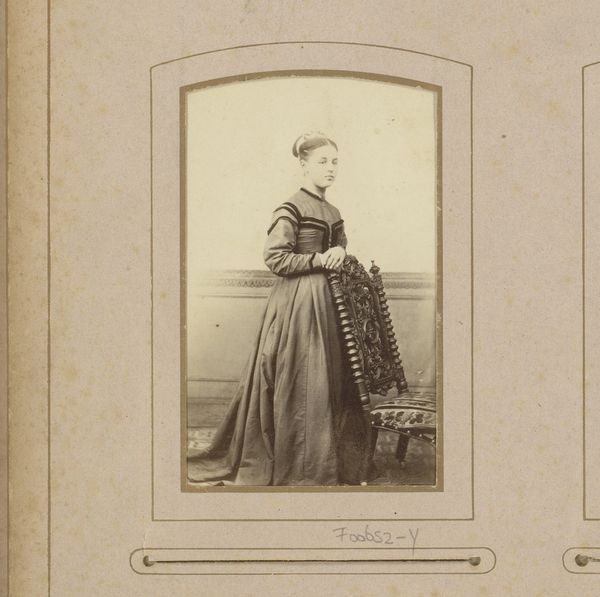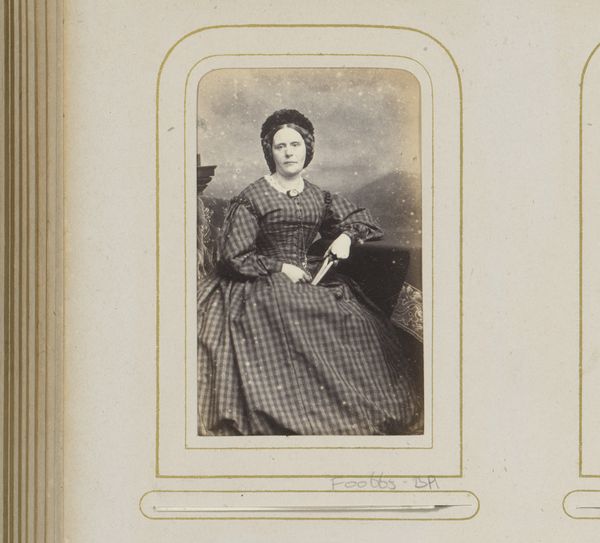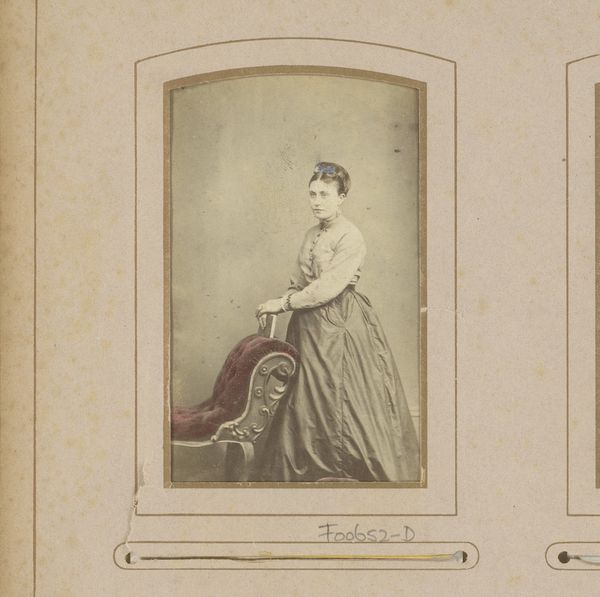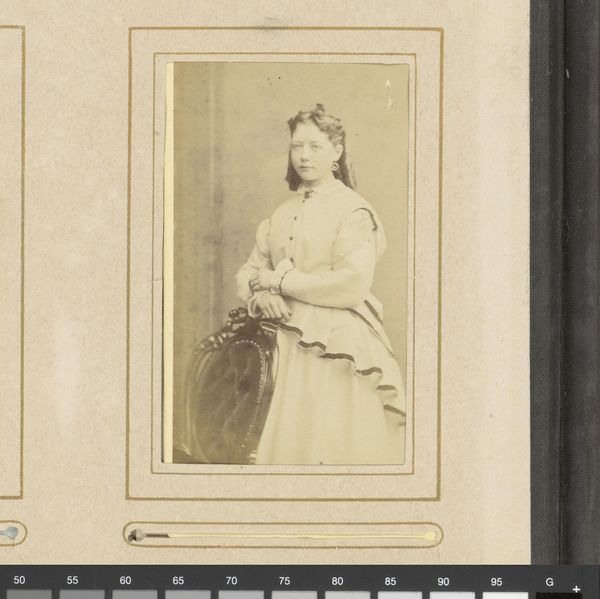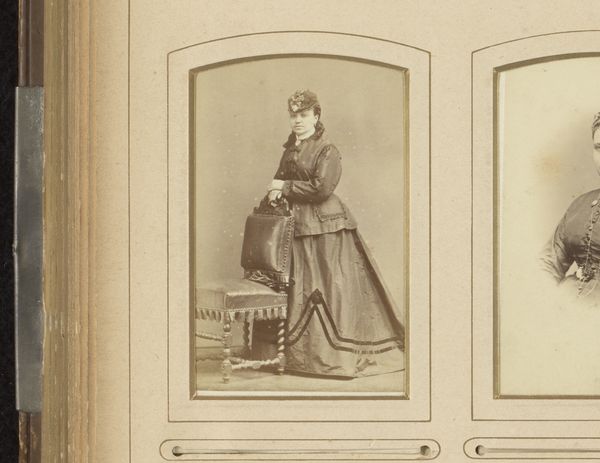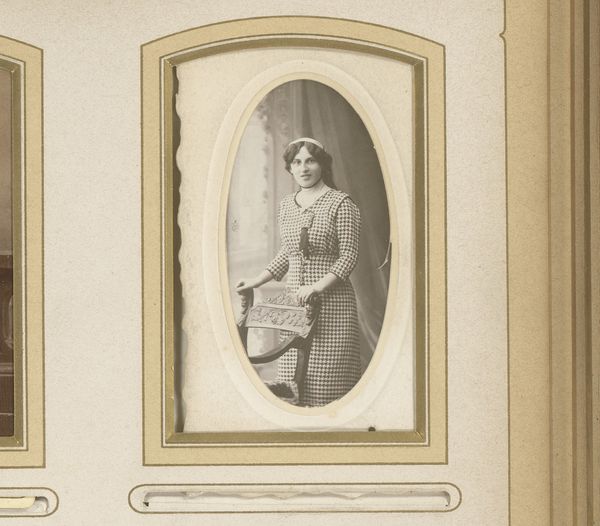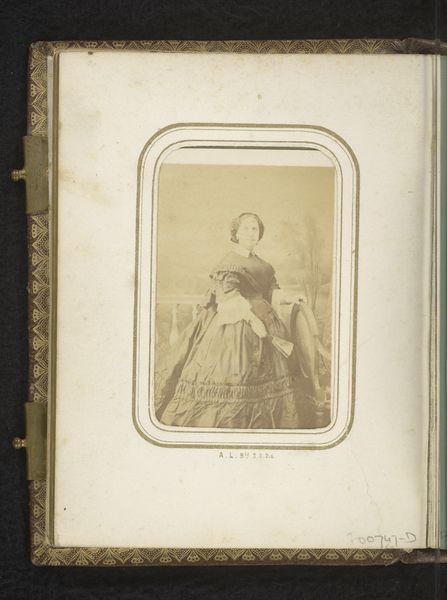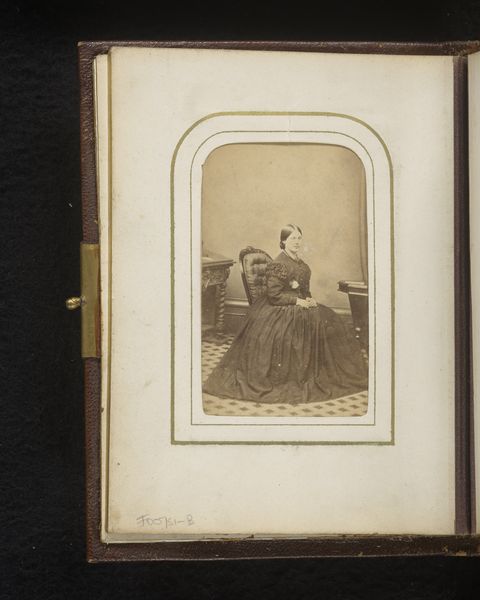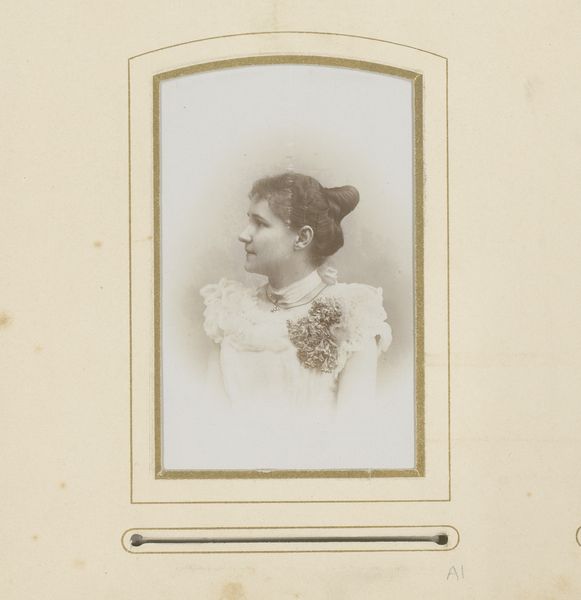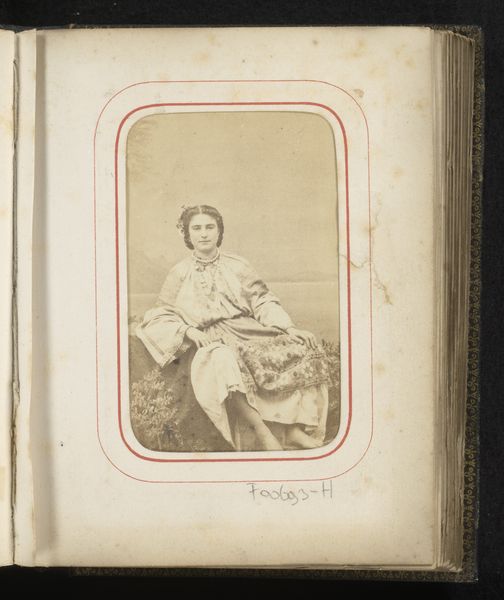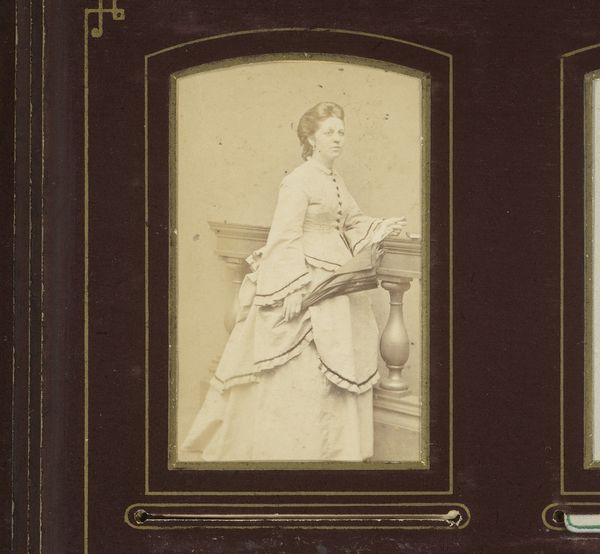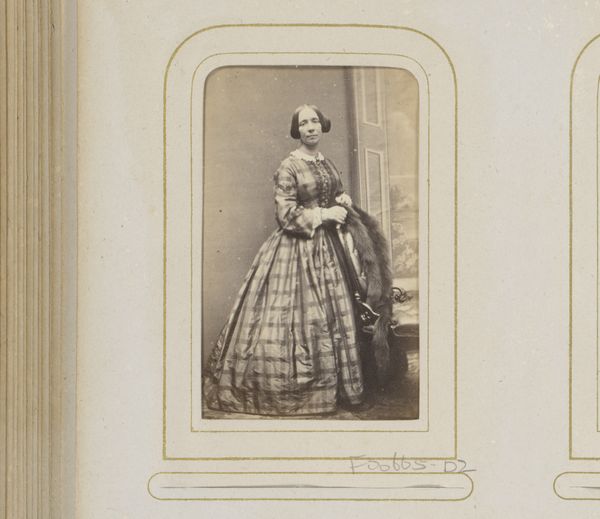
photography
#
portrait
#
aged paper
#
toned paper
#
light pencil work
#
photography
#
genre-painting
Dimensions: height 134 mm, width 96 mm
Copyright: Rijks Museum: Open Domain
Editor: This is a portrait of a woman by W. Hoffert, dated somewhere between 1895 and 1910. The photograph, with its light pencil work and toned paper, lends the subject a wistful air. What structural elements strike you most in this piece? Curator: Immediately, it’s the contrast between the soft, almost faded, photographic technique and the rigidity of the framing device, a precise rectangle set against what looks like the aged paper of a photo album. The subject's pose, in profile, contributes to this study of contrast. How does that contrast play out? Editor: I think it emphasizes a separation, or perhaps a tension, between the sitter and the viewer. It’s as if we’re observing a moment captured and contained. Curator: Precisely. Consider the diagonal line created by her gaze, juxtaposed with the right angles of the frame. It’s a deliberate choice in the composition, creating a visual dynamic that pulls the eye through the image. Note also the intricate details of her dress and hairstyle versus the relative simplicity of the backdrop. This layering suggests an intent to highlight individual characteristics within a confined, constructed setting. How might this interplay relate to formalist principles of visual harmony? Editor: Well, perhaps it indicates an intentional disjunction between what is depicted—a real person—and how it's depicted. By analyzing formal qualities such as line, form, and contrast, we can understand how the artwork means, more than what it may signify. Curator: A solid reading! The power rests not merely in replicating reality but also in reshaping perceptions through carefully calibrated aesthetics. This offers deeper meanings embedded in how we perceive those shapes, lines and light to create a different effect and perspective. Editor: That gives me a lot to think about regarding how form influences meaning in portraiture. Thank you!
Comments
No comments
Be the first to comment and join the conversation on the ultimate creative platform.
